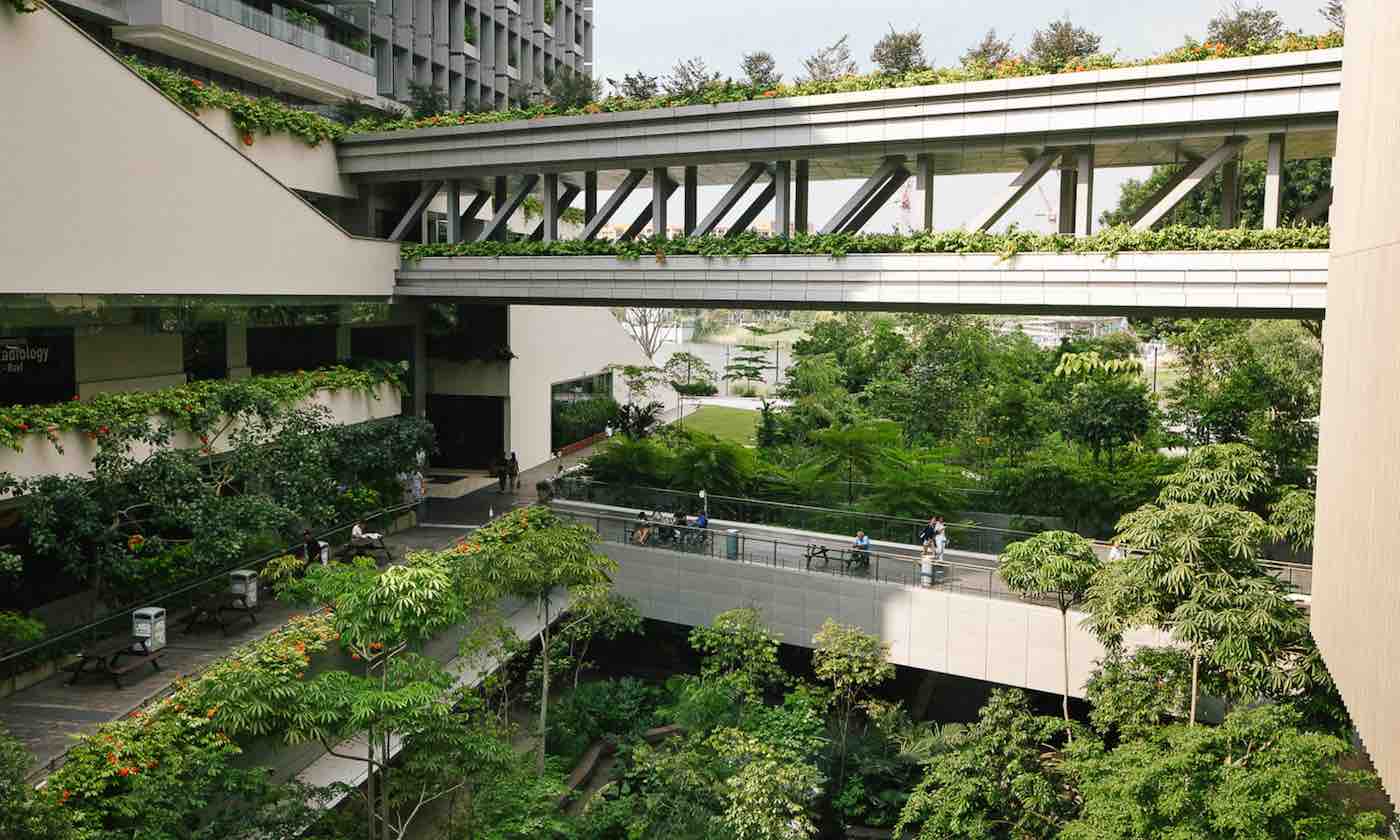
Hospital environments can be stressful for anybody—from the sterile smell and the drab decor to the metallic sounds of medical equipment, it isn't the most comforting setting for patients and visitors.
So when this design firm was tasked with creating a hospital which lowered people’s blood pressure, they decided to turn to greenery as the solution—and it worked perfectly.
Over 700 native species of fragrant trees and plants have been integrated into the structure and surroundings of the Khoo Teck Puat Hospital in Singapore.
When design firm CPG Corporation based in Singapore was commissioned to design the hospital in 2005, they were asked to create a hospital environment that soothed and uplifted its patients; as being in nature has been proven to have dozens of physical and mental health benefits, they believed foliage and natural greenery to be the best solution.
In addition to the hospital now serving over 800,000 patients since it opened its doors in 2010, a recent case study discovered that the “hospital’s lush greenery and peaceful ambiance have made it a popular spot for students seeking a conducive environment.”
Several other clever details contribute to the hospital’s ingenious design. Researchers discovered that the facility’s enlarged windows and spacious indoor layout improved airflow throughout the area by 20 to 30%. Since this reduced the building’s dependence on mechanical ventilation by 60 percent, researchers say the facility likely saves untold amounts of money in energy costs.
On top of all of this, the hospital has a volunteer-run rooftop garden with over a hundred species of fruit trees, fifty species of vegetables, and fifty species of herbs, all of which are served to the patients.
The hospital has won many awards for its design, including the Biophilic Design Award from the International Future Living Institute, a nonprofit that supports healthier and more sustainable public spaces.
The success of the hospital has already spurred the architects to launch similar projects in China, Malaysia, and Pakistan—and it will likely inspire many more across the world.




Image source: Khoo Teck Puat Hospital













COMMENTS